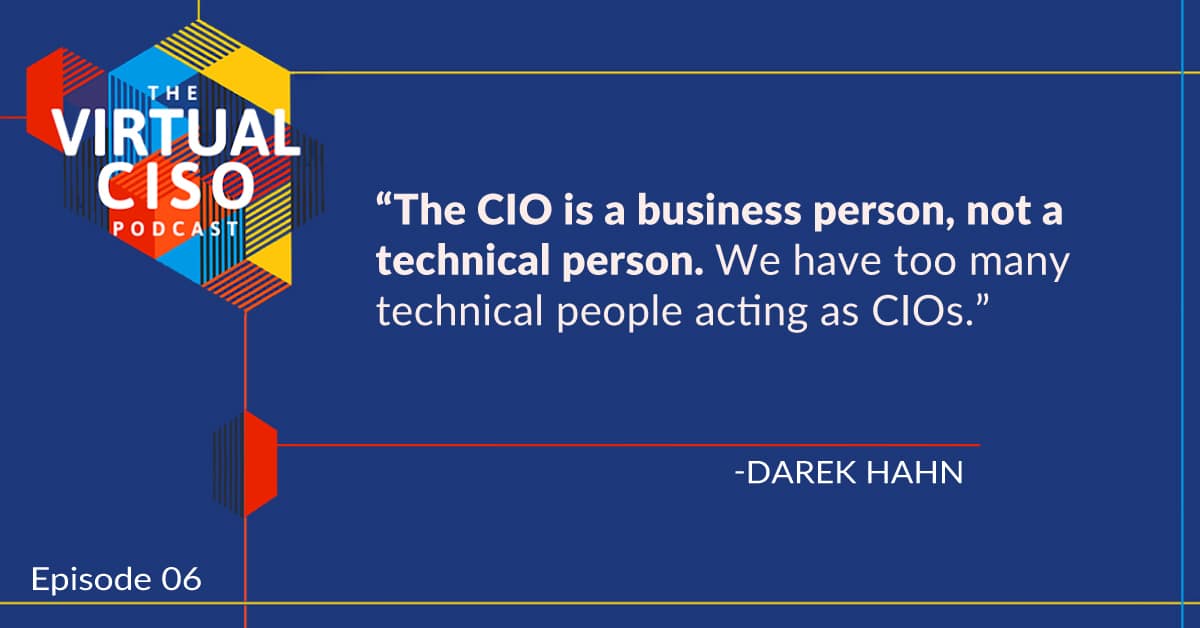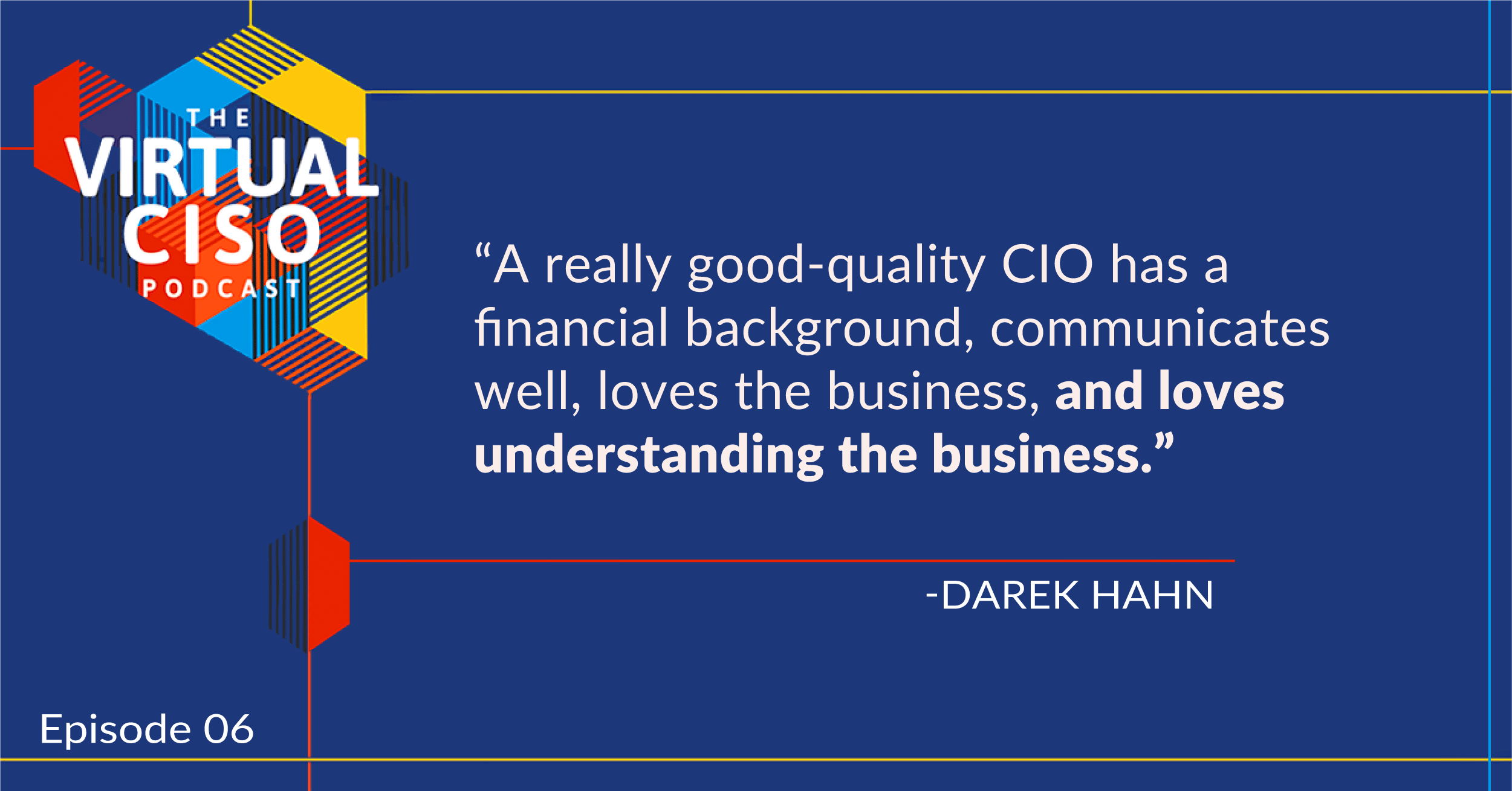Last Updated on January 29, 2025
In this world of remote work that we’ve found ourselves in, there are likely a lot of companies looking around and wondering if they’ve got the right staff.
With a fully remote workforce comes a lot of new challenges in the IT space, and if you’re a smaller company, you may not be in the space to bring on a full time CIO, but you still need the governance and expertise of a CIO.
Cue the virtual CIO.
And there are a lot of managed IT service companies that offer some level of virtual CIO support.
That’s why, on this episode of the Virtual CISO podcast, I chatted with Darek Hahn, President & CEO at VelocIT, to discuss:
- The role of the CIO vs the CTO
- What makes a good virtual CIO
- When you know you need one
- The difference between a virtual CIO and a traditional MSP consultant
The CIO vs the CTO
Not that it’s a contest, but the CIO and the CTO are very different roles.
The best CIOs are the ones with MBAs that really understand the finance behind the technology decisions, truly understand the business needs, and can really drive things from a business perspective.
Ask yourself the question: “How does what we’re going to do technology-wise help the business either from an efficiency standpoint or from a revenue generation standpoint?” Those are the two most important things you should talk about with new IT solutions.
Ultimately, the CIO is the person who is responsible for the business side, and the CTO is responsible for figuring out how to technically accomplish what the CIO has laid out.
The CIO translates the business need and vision into an actionable technology plan and then the CTO or a similar role translates the IT plan into implemented technologies.
Virtual CIO or MSP Consultant?
So what exactly is the difference between a virtual CIO and a conventional MSP consultant? Wouldn’t one suffice in place of the other? Not necessarily.
The CIO is a true business partner. There are an awful lot of MSPs that aren’t selling true business partnership. What they’re selling is account management.
Darek talked about a recent example of a company that came to them and was looking to move to Office365. When they asked the company why they wanted to make the switch, their answer was all too familiar.
“Well, because everybody is.”
Once they started talking it over, they started exploring the options, and the desires of the company. As a production facility, they wanted to spend the least amount of money on technology.
So Darek and his team suggested Google as an alternative. It was cheaper, and served all of the needs that they had. It was a conversation that nobody had ever had with them because everybody wanted to sell them Microsoft.
That’s the difference between a virtual CIO and a conventional MSP consultant.
When Do You Need a Virtual CIO?
The real question, according to Darek, is “When do you not need one?”
As your organization is growing and you’re starting to bring more and more people in house, you really start to look at technology from a larger scale.
You need more IT governance on how you manage new projects and new work coming in, and so you have to start developing an IT plan.
Most companies have financial plans, but few have IT plans. That’s when a virtual CIO can be a game changer for your organization.
What Makes a Good Virtual CIO?
It starts with business first.
Do they love business? Are they fascinated by how business operates?
They should be fascinated with the work.
If you’re a manufacturing company, are they fascinated with manufacturing and how it works and how to make it more efficient?
Too many people in the IT world want to do things by their brain and their opinion. They should trust numbers and data.
The most important thing, according to Darek, is can they manage UP?
CIOs have to manage up. They have to communicate with the board of directors, with the C-level executives, and everybody else. Can they communicate at a level that most people will understand?
Because the board of directors likely won’t understand your IT jargon. They’re going to want straight talk and layman’s terms.
Want to learn more? We can help you get started.
This post is based on an episode of The Virtual CISO Podcast, featuring Darek Hahn. To hear this episode in its entirety, and many more like it, you can subscribe to The Virtual CISO Podcast here.
If you don’t use Apple Podcasts, you can find all our episodes here.
























